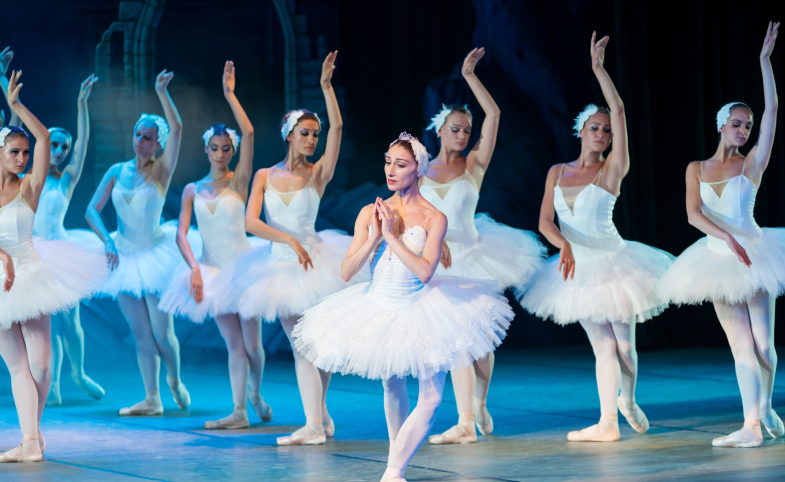With a population of 216 million and a distinct culture of fan fervor, Brazil is a unique region for cultural exchange and diplomacy. American sports teams and entertainers have shown a new dedication to the Brazilian...
KEEP READINGThe CPD Blog is intended to stimulate dialog among scholars and practitioners from around the world in the public diplomacy sphere. The opinions represented here are the authors' own and do not necessarily reflect CPD's views. For blogger guidelines, click here.

The Role of Cultural Diplomacy in Strengthening Soft Power in a Globalized World
In a world often dominated by headlines of conflict and division, an increasingly powerful force is working behind the scenes to shape global perceptions: culture. Through films, art, language, and shared traditions, cultural diplomacy offers a means of communication that transcends politics. It is a form of public diplomacy that allows countries to engage not by coercion or trade deals, but through mutual respect and storytelling.
Cultural diplomacy is the strategic use of cultural assets—such as arts, education, and heritage—to foster mutual understanding between nations. Political scientist Joseph Nye famously conceptualized "soft power" as the ability to influence others through attraction rather than coercion or payment. Cultural diplomacy is a primary tool for achieving this, as it resonates with human values across borders (Mbira, 2024).
Culture stands out among the three pillars of soft power—political values, foreign policy, and culture—because it is the most accessible. Unlike political values that may clash or foreign policy that often involves rigid negotiations, culture speaks to the heart. From academic exchange programs to culinary festivals, these touchpoints of interaction forge connections that formal diplomacy cannot.
Consider South Korea’s meteoric rise in global influence through the Korean Wave (Hallyu). The international popularity of K-pop and Korean dramas has significantly boosted the country's image, drawing global interest to Korean values, language, and lifestyle. Groups like BTS have gone beyond entertainment to promote social causes and even address the United Nations—an act that symbolically demonstrates cultural diplomacy at work (Shome, 2023).
Germany’s Goethe-Institut is another successful model, promoting German language and culture in over 90 countries. These institutes serve not only as language schools but also as cultural hubs that promote dialogue and creativity. When a student in Cairo takes a German class or an artist from Ghana exhibits in Berlin, they participate in acts of diplomacy more subtle, yet no less impactful, than traditional embassies.
Even in tense geopolitical climates, culture has acted as a backchannel for diplomacy. During the Cold War, American jazz musicians like Louis Armstrong toured internationally, symbolizing democratic ideals through music. Likewise, Soviet ballet companies performed worldwide, reflecting cultural pride. These artistic exchanges softened ideological divides and reminded audiences of shared human aspirations like freedom and beauty (Liu & Taqa, 2015).
"Unlike political values that may clash or foreign policy that often involves rigid negotiations, culture speaks to the heart. From academic exchange programs to culinary festivals, these touchpoints of interaction forge connections that formal diplomacy cannot. "
For countries with historically negative international perceptions, such as Pakistan, cultural diplomacy offers an opportunity to rewrite the narrative. Projects like showcasing truck art in Europe or Sufi music in Central Asia are not mere exhibitions; they communicate resilience, creativity, and a message of peace: "We are more than our headlines."
Cultural theorist Raymond Williams described culture as “a whole way of life,” encompassing not just art or music, but daily beliefs and practices. This expansive view explains why cultural diplomacy is so effective. It taps into shared human values, facilitating empathy rather than enforcing opinion. Through storytelling and engagement, it nurtures the trust needed for peaceful global relations.
However, challenges persist. Cultural diplomacy must remain authentic to be effective. Over-scripted or overly politicized efforts can backfire, appearing insincere or propagandistic. True cultural diplomacy demands long-term investment and genuine exchange. Like cultivating a relationship, it grows over time—with consistency and care.
In an era defined by global challenges such as pandemics, climate change, and migration, collaboration is critical. While treaties and sanctions have their place, the foundation of lasting cooperation is trust—and trust grows from understanding. Cultural diplomacy, when sincere and sustained, fosters that understanding.
Ultimately, cultural diplomacy is not a branding tool—it is a bridge. It connects people through shared human experiences and mutual respect. In a fragmented world, culture offers common ground. As such, investing in cultural diplomacy is investing in a more interconnected, peaceful future.
Visit CPD's Online Library
Explore CPD's vast online database featuring the latest books, articles, speeches and information on international organizations dedicated to public diplomacy.
POPULAR ARTICLES
-
November 3
-
November 5
-
November 13
-
November 25
-
December 17
Join the Conversation
Interested in contributing to the CPD Blog? We welcome your posts. Read our guidelines and find out how you can submit blogs and photo essays >.













